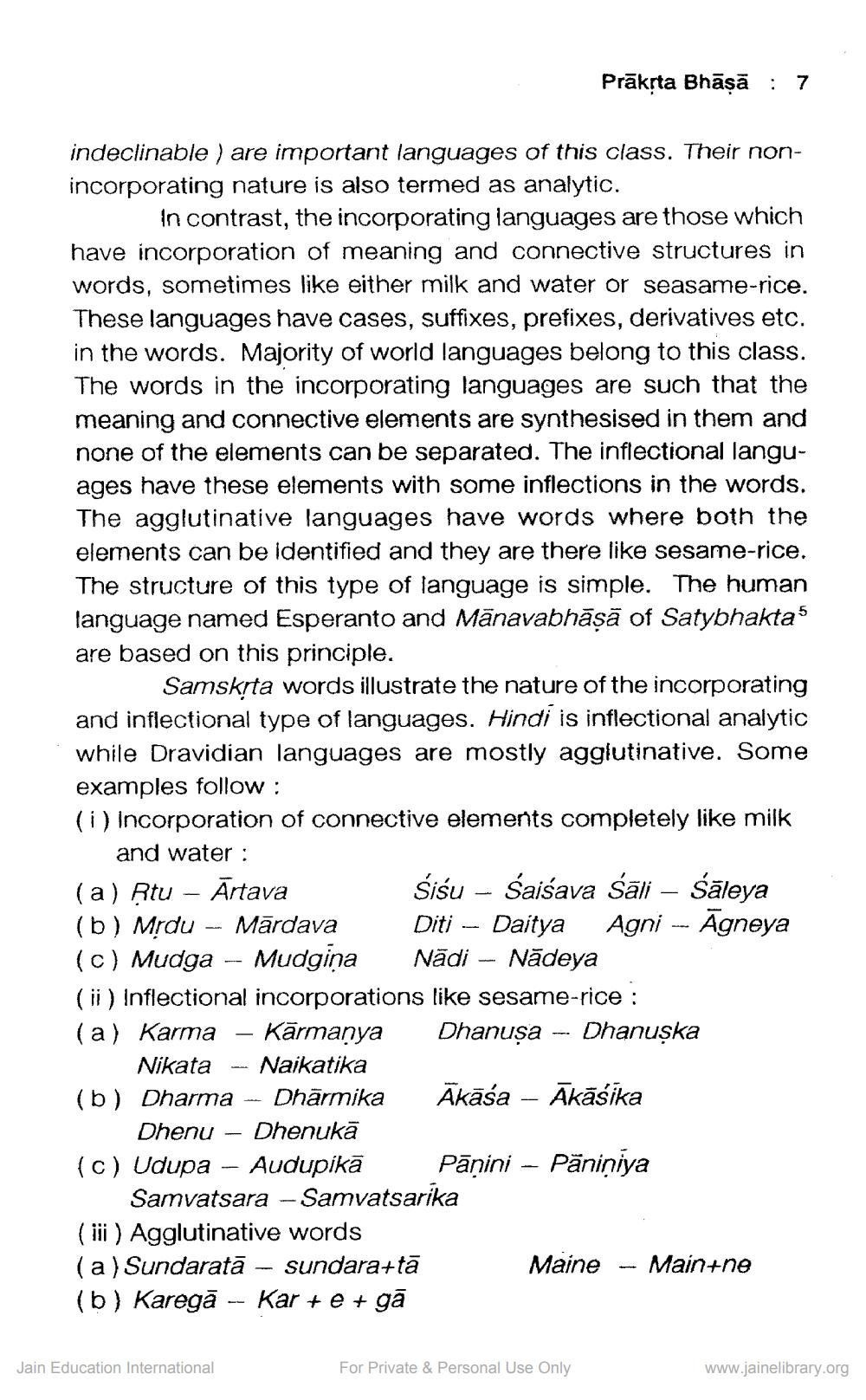________________
Prākrta Bhāṣā : 7
indeclinable ) are important languages of this class. Their nonincorporating nature is also termed as analytic.
in contrast, the incorporating languages are those which have incorporation of meaning and connective structures in words, sometimes like either milk and water or seasame-rice. These languages have cases, suffixes, prefixes, derivatives etc. in the words. Majority of world languages belong to this class. The words in the incorporating languages are such that the meaning and connective elements are synthesised in them and none of the elements can be separated. The inflectional languages have these elements with some inflections in the words. The agglutinative languages have words where both the elements can be identified and they are there like sesame-rice. The structure of this type of language is simple. The human language named Esperanto and Mānavabhāsā of Satybhaktas are based on this principle.
Samskrta words illustrate the nature of the incorporating and inflectional type of languages. Hindi is inflectional analytic while Dravidian languages are mostly agglutinative. Some examples follow : (i) Incorporation of connective elements completely like milk
and water : (a) Rtu – Ārtava sisu - Saisava sāli – śāleya (b) Mrdu - Mārdava Diti - Daitya Agni -- Āgneya (c) Mudga - Mudgina Nādi - Nādeya (ii) Inflectional incorporations like sesame-rice : (a) Karma – Kārmanya Dhanusa - Dhanuska
Nikata - Naikatika (b) Dharma - Dhārmika Ākāśa - Ākāśika
Dhenu - Dhenukā (c) Udupa - Audupikā Pāṇini – Pāniņiya
Samvatsara - Samvatsarika (iii) Agglutinative words (a) Sundaratā - sundara+tā
Maine - Main+ne (b) Karegā - Kar + e + gā
10
Jain Education International
For Private & Personal Use Only
www.jainelibrary.org




